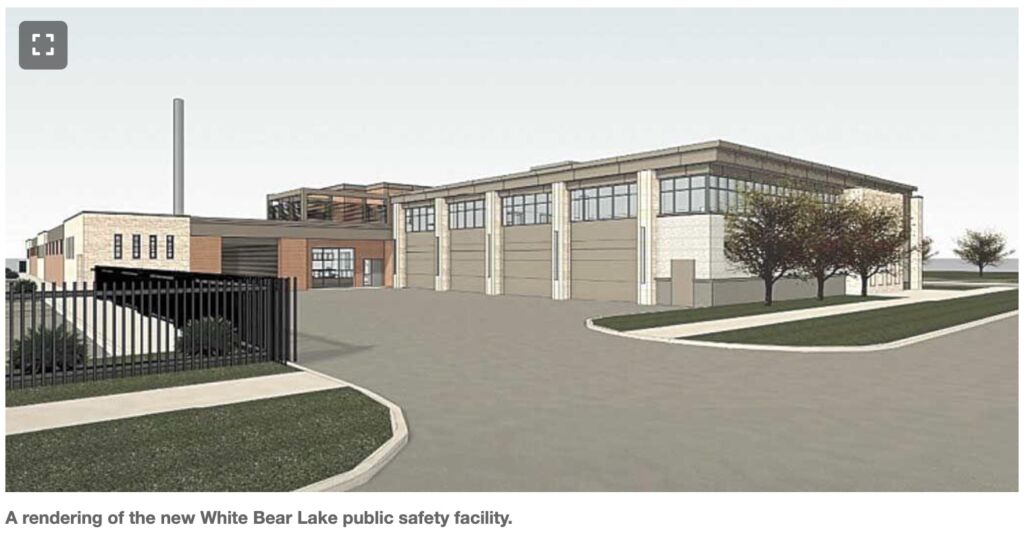Capitol Watch: Green regulations drive up the cost of state borrowing
It’s widely understood that Minnesota borrows a lot of money every year to construct and renovate state and local government buildings. What’s not widely known is that the cost of every project funded with state borrowing is artificially inflated to comply with progressive environmental regulations called B3, or “Buildings, Benchmarks and Beyond.” Among other things, the B3 guidelines require buildings to be 90% more energy efficient than average.
The B3 guidelines are administered though the Center for Sustainable Building Research (CSBR) at the University of Minnesota and directly tied to Architecture 2030, a think tank headquartered in New Mexico. According to their website, Architecture 2030 is committed to reducing the carbon footprint of the “built environment.” The day after Donald Trump was elected in 2016, their founder and CEO Ed Mazria issued a statement urging the United States not to withdraw from the Paris Climate Agreement.
“We are facing two very different and defining moments in history, the ratification of the Paris Climate Agreement and the results of the 2016 U.S. presidential election. Should the U.S. government fail to honor or withdraw from the Paris Agreement, this will be completely inconsistent with our core values and professional and civic responsibilities.”

The legislature never discusses or debates the details of the 157 pages of rules and regulations that must be followed for every major building project it funds. The guidelines include a long list of regulations covering bird safety, natural vegetation, daylighting, acoustics, window access, ergonomics and wayfinding. They are updated by the U of M whenever Architecture 2030 changes its standards. Most people at the Capitol, including members of the Capital Investment Committees in the House and Senate, are not even aware of the B3 process.
The B3 standards are also connected to Gov. Tim Walz’s renewable energy mandates. The document states: “The performance standards must reflect the reductions in carbon dioxide emissions per square foot resulting from actions taken by utilities to comply with the renewable energy standards in section 216B.1691.”
A case study
In 2022, the City of White Bear Lake decided to join other cities by asking the legislature to provide funding for a $10.5 million public safety building. The existing building has no room for police cars and modern fire trucks can barely clear the garage door. City leaders were told that receiving state funding would trigger the B3 building process and add $2.2 million to the project’s cost, a 22% increase! Engineers said they would have to fill binders full of reports during and after the construction process, costing time and money. Since the legislature failed to pass a bonding bill in 2022, White Bear Lake reverted to their original plans and are funding the project without state funds or the costly B3 process.

Is the White Bear Lake example anecdotal or does the B3 process add 20% to the cost of every project funded by the state? And what do taxpayers get for these inflated building costs? As Isaac Orr at American Experiment has repeatedly documented, Minnesota’s efforts at carbon reduction will have no measurable impact on global temperatures. According to Orr, completely eliminating greenhouse gas emissions from Minnesota (achieving net zero) would reduce carbon dioxide emissions by 161 million tons, which would yield a future temperature reduction of 0.003 degrees C by 2100, an amount far too small to measure with the most sophisticated scientific equipment.
One of the other “features” of B3 is the B3 Benchmarking tool to track and compare actual energy use of building projects after construction. It doesn’t appear anyone is paying attention to the ongoing reporting requirements after the projects are completed, however. According to the Minnesota B3 Case Studies database, only 28 out of 187 projects are in operational compliance. US Bank Stadium used the B3 guidelines, and this is the entry for that project in the database:
Though it received General Obligation bonds from the State of Minnesota, this project is not compliant with the B3 Guidelines.
More evidence that environmental activists are more interested in optics than actually getting anything done. But at what cost?
The 2023 version of the bonding bill totaled $2.6 billion and included a laundry list of pork projects including new buildings for politically connected non-profits. Debt service (paying off the loans on these projects) is one of the fastest-growing line items in the state budget and now consumes $1.35 billion per biennium. A little-known state law requires stringent and costly environmental regulations be applied to every major project funded with state borrowing, driving up the costs of these projects by millions of dollars and doing nothing to help the environment.
Gov. Walz and the legislature are on track to pass another bonding bill this year with a price tag of $1 billion. The legislature should repeal the costly B3 rules before taxpayers are on the hook for one more dollar of borrowing.
This post was originally sent to subscribers of the Capitol Watch email. To subscribe and see this content first throughout the legislative session, click here.